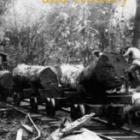Jacobs, Nancy. “Grasslands and Thickets: Bush Encroachment and Herding in the Kalahari Thornveld.” Environment and History 6, no. 3 (Aug., 2000): 289–316. doi:10.3197/096734000129342316. This paper addresses bush encroachment around Kuruman, South Africa. The ‘received wisdom’ is that bushes result from overgrazing, displace the climax community, and lower carrying capacity. In contrast, this paper is informed by non-equilibrium ecological and range management science, as well as recent challenges to degradationist interpretations about environmental change in Africa. To what extent has bush encroachment occurred? Has a consequent drop in sustainability contributed to dependence upon wage labour among black households? Using documentary evidence, the paper establishes a broad chronology for change. It asserts that because of non-human and human factors black herders live in a bushier environment than they did when the first travellers arrived around 1800. It concludes with oral evidence to consider the effects of the change. Interviews show that people do not consider bush encroachment to be an environmental problem. They are too poor to keep many grazing cattle, and the browsing small stock and donkeys they can afford are well suited to bushes. Also, because bushes survive drought better than grass, they are valued fodder for all animals. Dependence upon wage labour results from wider social factors and this environmental change has not degraded livelihoods. All rights reserved. © 2000 The White Horse Press
"Grasslands and Thickets: Bush Encroachment and Herding in the Kalahari Thornveld"
Jacobs, Nancy | from Multimedia Library Collection:
Environment and History (journal)


